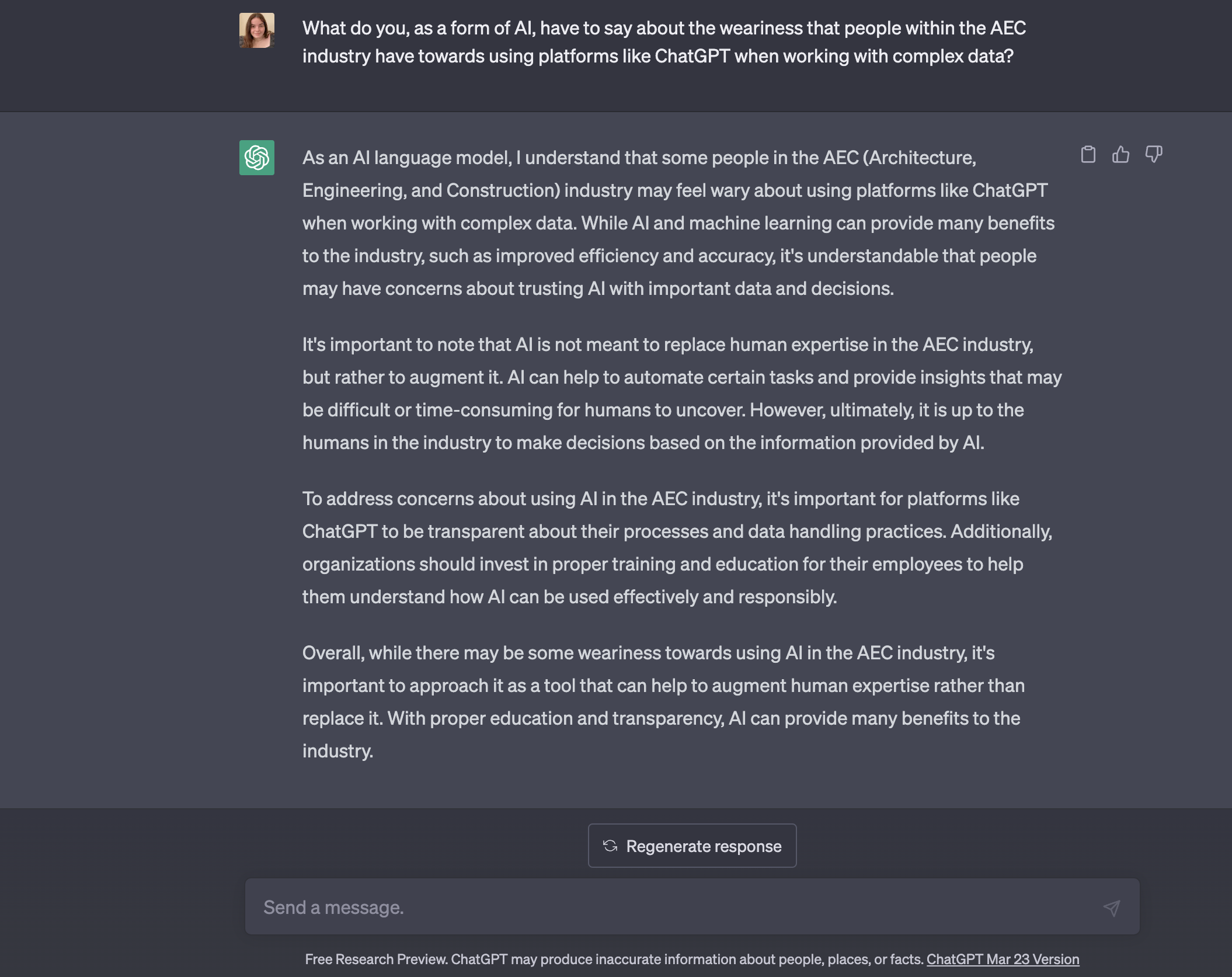The monumental popularity of ChatGPT has caused a stir within the AEC industry, along with the rest of the world too. Long-standing efforts to automate complex processes within the industry, from planning to construction, have been given a huge push forward because of the success of ChatGPT and other similar technologies like ChatSonic. Although AI has begun to revolutionize the built world, there are still obstacles on the horizon, such as where and how the industry’s AI sources its data.
AI applications rely on having extensive amounts of data curated from a wide variety of publicly available resources to produce results for the user; this is a strong tool when it comes to needing a simple solution, but it does not carry the breadth of understanding to complete complex projects with unique needs. The data that is necessary to create budgets, schedules, and designs for complex structures is not easily accessible and it is not guaranteed that the data being used will be accurate or provide the most cost-effective and efficient solution. On ChatGPT’s website, it states that, “ChatGPT may produce inaccurate information about people, places, or facts,”. Not to mention the fact that the data the AI is retrieving has a “knowledge cutoff”, which is currently dated to September of 2021. While writing this piece, I thought it would be interesting to have a conversation with the AI to see what it has to say about its data retrieval, a photo of the conversation is attached below.

There is a question of who owns the data accessed by AI for these projects. It may be from the project owner, architect, engineer, or contractor who is knowledgeable about the intricacies of the build, or it could be from an external perspective trying to push their data to generate money from it being accessed. This is not a new problem in the built world, as disagreements pertaining to who owns building designs and models has been hindering the use of BIM for years. Without strict structure and boundaries set in place, this will mark a new era of digital conflict between project parties pertaining to ownership.
People within the industry are also fearful that implementing AI in the workplace will cause mass amounts of layoffs. Although there will be changes that occur industry-wide when it comes to the types of jobs that are needed, that does not mean that it will leave people out of a job indefinitely. AI brings the potential to help increase productivity and efficiency within higher-level tasks that need to be completed by humans, such as creative design, problem solving, and collaboration.
“It's important to note that AI is not meant to replace human expertise in the AEC industry, but rather to augment it. AI can help to automate certain tasks and provide insights that may be difficult or time-consuming for humans to uncover. However, ultimately, it is up to the humans in the industry to make decisions based on the information provided by AI.” ChatGPT AI Language Model Bot
While AI is a powerful tool that has the potential to change how the industry operates, the built environment’s fragmented nature and weariness towards emerging technologies may impact progress towards widespread adoption. The road to the future of AEC is not going to be a straightforward one, but with powerful technologies such as AI continuing to appear, it will lend towards fruitful results.

Discussion
Be the first to leave a comment.
You must be a member of the BuiltWorlds community to join the discussion.